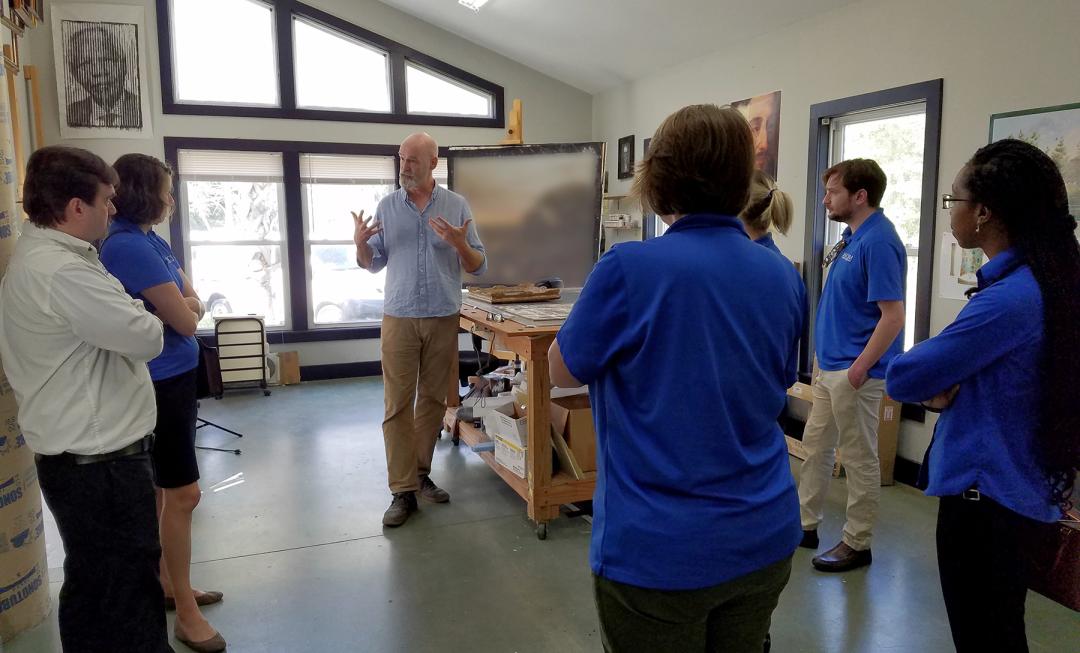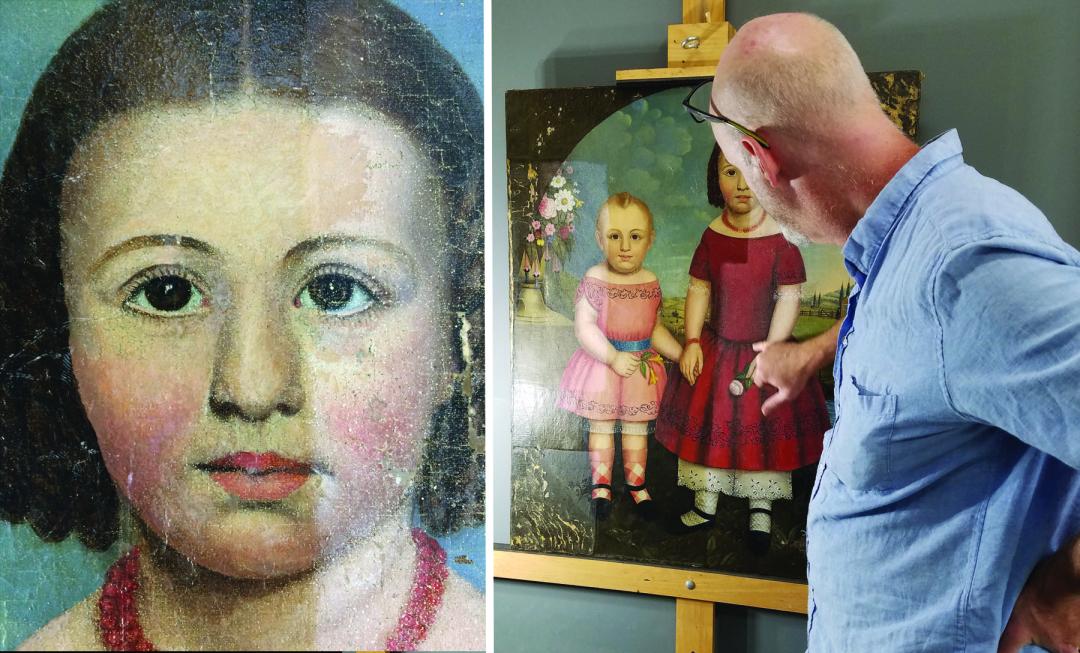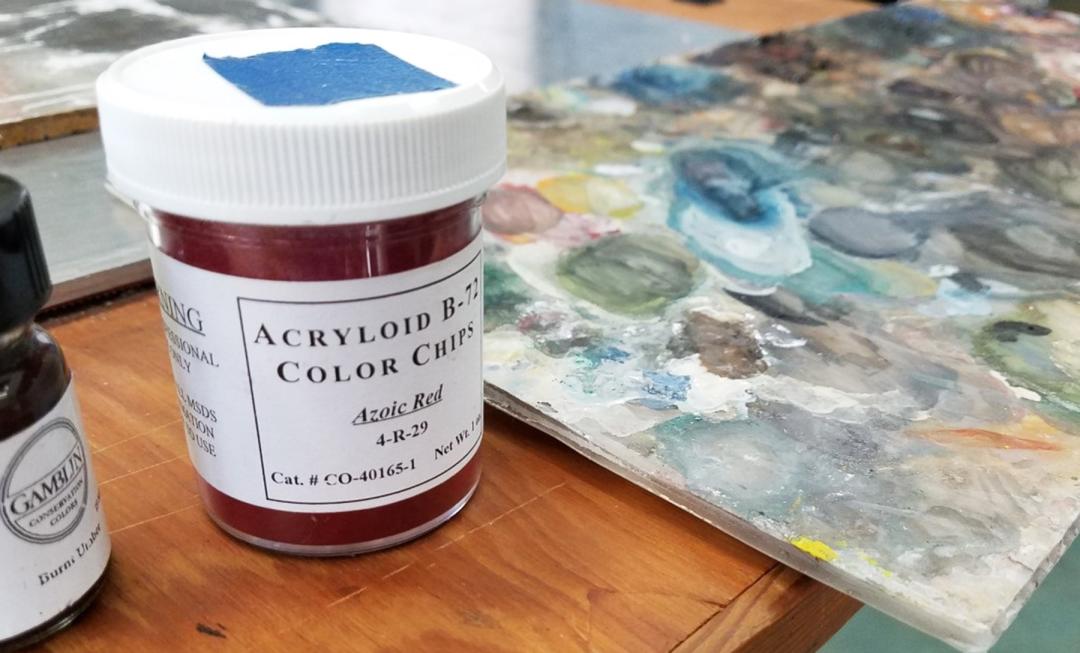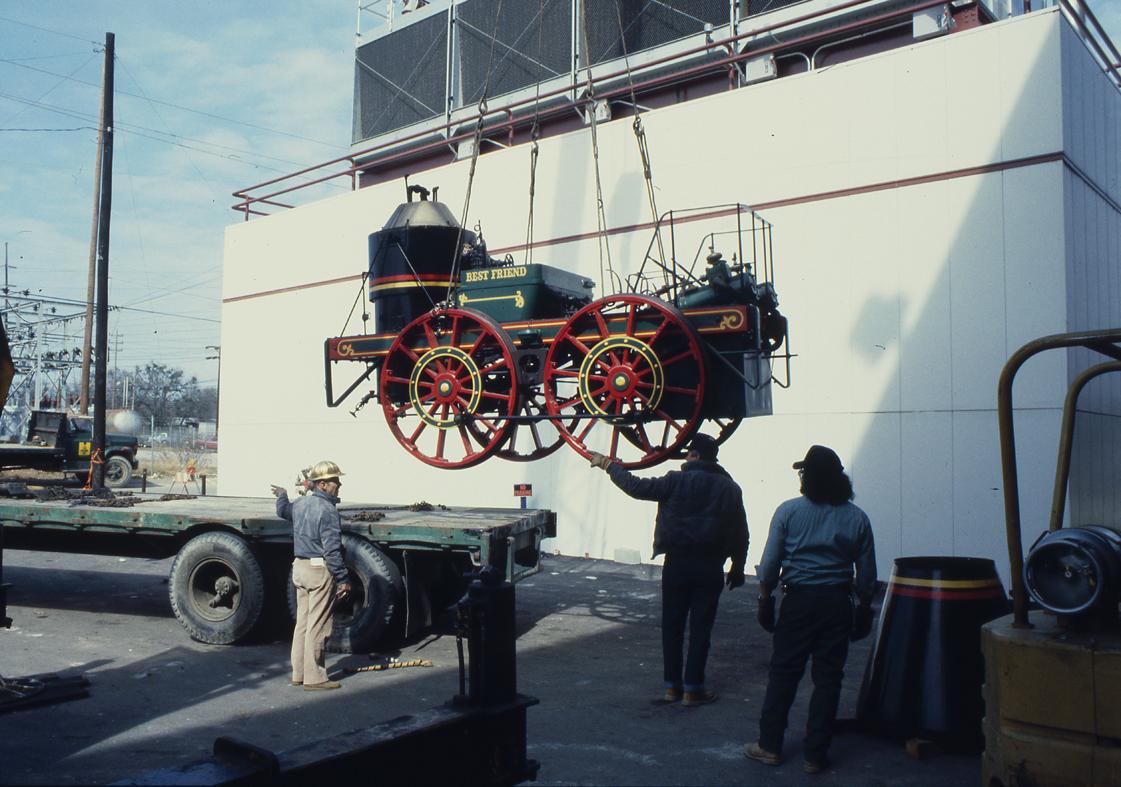

The IMLS team took a short break from inventorying the art collection to pay a visit to Craig Crawford’s studio to see the action of restoring a newly acquired piece art up close and personal. This piece is uniquely special to the IMLS team since it was used for condition training to learn the proper vocabulary and what to look for when condition reporting. When conducting a condition report, we generally begin by providing a single word to summaries the overall appearance, e.g., excellent, good, fair, poor. When the portrait first arrived, it was not in the best of shape; there were noticeable amounts of losses and flaking throughout the painting. Craig Crawford offered his conservation expertise on how he will bring the charm back to our portrait.

Paintings are generally constructed on either canvas or wood panel in which the paint is then later applied. After the painting was completed, it might have been given at least one coat of a varnish which is not always applied by the artist. Varnish does give a rich appearance to the colors of the dried paint and can help protect the paint surface. However, depending on the type of varnish used it will discolor over the years, causing more damage to the painting. With age, the paint and varnish often develop fine crazing or cracks, that are not always visible to the naked eye. Factors such as humidity and temperature can cause damage as well. If an artwork is stored in a very damp environment, it can lead to the piece absorbing moisture from the air, causing the canvas to shrink which sometimes causes the paint to crack more. Added to this problem is the accumulation of dirt ingraining itself within the surface of the varnish. Dirt can become embedded between the cracks causing the paint to lift and flake. Conservators now use a varnish and paint chip combination also known as Acryloid B-72 to coat the artwork after it has dried. Using this combination is safer, more protective against dirt and will not discolor.

The first challenge for anyone charged with the responsibility for a painting, be the owner, curator or registrar, is how to keep the painting in safe conditions and away from harmful sunlight, dust and irregular temperatures. After the portrait has been restored, the IMLS team will inventory, digitize and give it a safe home in the art storage. For now, the portrait is undergoing an expansive makeover, but we look forward to seeing the finished piece.
About IMLS The Institute of Museum and Library Services is the primary source of federal support for the nation’s libraries and museums. We advance, support, and empower America’s museums, libraries, and related organizations through grantmaking, research, and policy development. Our vision is a nation where museums and libraries work together to transform the lives of individuals and communities. To learn more, visit www.imls.gov and follow us on Facebook and Twitter.










